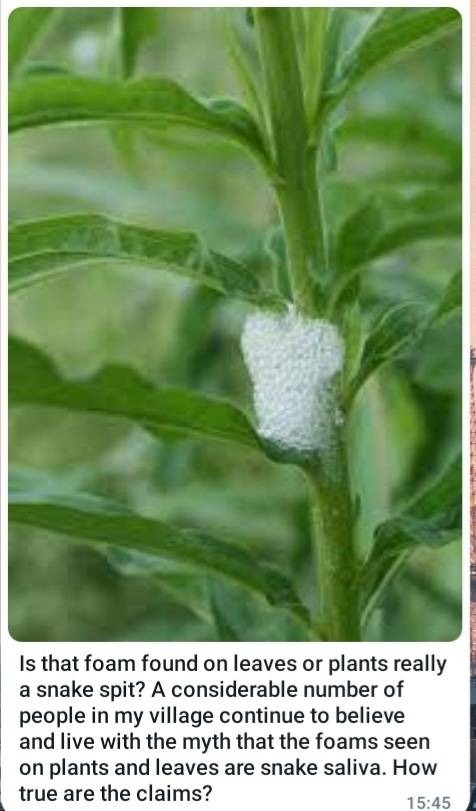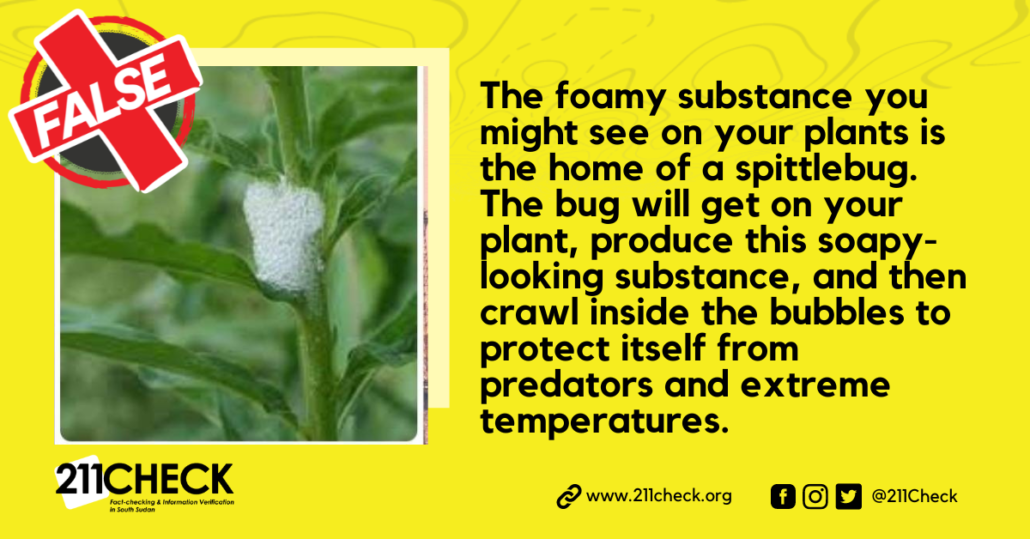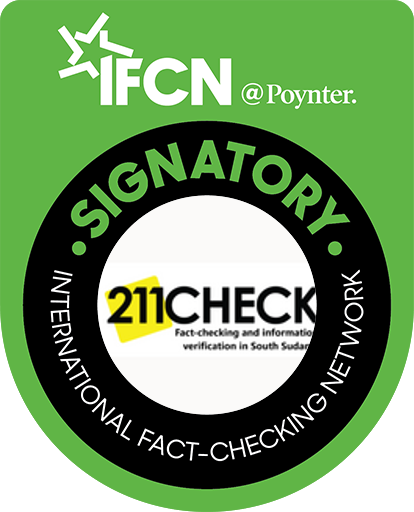Fact-check: No, foam found on leaves or plants is not snake saliva
Foam found on leaves or plants is not snake saliva but Cuckoo Spit or Froghopper Spit created by larvae of the froghopper insect. Claims that foam on plants is snake saliva are a myth.
Writer: Jibi Moses
A common myth is that foam found on leaves or plants is snake saliva. This claim, popular and believed by many, recently surfaced in a WhatsApp group chat. The member wanted to know whether the foam on trees or plants was snake spit.
However, this claim is not supported by scientific evidence and is false. While it is true that snakes do produce saliva, it does not typically appear in the form of foam and is not commonly found on plants or leaves.

211 Check investigated and found that young Froghoppers caused the foam. Scientific name: Cercopoidea, Order: Hemiptera, Kingdom: Animalia, Suborder: Auchenorrhyncha, Superfamily: Cercopoidea; Leach, 1815.
The foam that can sometimes be found on leaves or plants is known as Cuckoo Spit or Froghopper Spit, and the larvae of the froghopper insect create it. The larvae produce the foam by excreting a liquid waste product which they mix with air by rapidly flicking their bodies back and forth, creating the characteristic foam.
The froghoppers, or the superfamily Cercopoidea. These families are best known for the nymphal stage, which produces a cover of foamed-up plant sap visually resembling saliva; the nymphs are therefore commonly known as spittlebugs, and their foam is popularly known as Cuckoo spit, Frog spit, or snake spit. As these names are commonly associated with the foam, neither Cuckoo, frogs, nor snakes produce them.
This characteristic spittle production is associated with the unusual trait of xylem feeding. Whereas most insects that feed on sap feed on the nutrient-rich fluid from the phloem, Cercopidae utilise the much more dilute sap flowing upward from the roots via the xylem. The large amount of excess water that must be excreted and the evolution of special breathing tubes allow the young spittlebug nymphs to grow in the relatively protective environment of the spittle. Usually, an animal shouldn’t be able to survive on a diet so low in nutrients. Still, the insects’ digestive system has two symbiotic bacteria that provide them with the essential amino acids.
The foam serves purposes such as hiding the nymph from the view of predators and parasites and insulating against heat and cold, thus providing thermal control and moisture control; without the foam, the insect would quickly dry up. The nymphs pierce plants and suck sap, causing very little damage; much of the filtered fluids go into producing the foam, which has an acrid taste, deterring predators. Further examples of how spittlebugs are seen in the links here, here, here and here
Are spittlebugs dangerous?
The bugs and their byproducts are not harmful to humans, but consider wearing gardening gloves for this. You can crush the larvae with your fingers or drop them into a bucket of soapy water. Spraying spittlebugs with a garden hose washes the insects and their residue off your plants and can drown the eggs. The damage they cause is not very harmful to plants, but their shelters are a nuisance to get rid of. They can also infest turfgrasses, creating occasional browning. While they feed on plants, they don’t drain enough nutrition from the sap to harm them and pose no risk to humans.
Do snakes produce saliva?
Snakes do produce saliva. Venomous snakes have evolved one pair of salivary glands into poison glands which produce venom. The venom is made by organs that evolved from salivary glands. Ordinary saliva contains enzymes to help digest food as you chew it, and natural selection has favoured snakes that include ever more toxic enzymes in their saliva.
Conclusion:
The claim that the foam found on leaves or plants is snake spit is false; much as it is popularly known by it, the foam is produced by the nymph Cercopidae. The insects use this foam for protection against too much heat and cold. It also protects them from external attacks.
To ensure accuracy and transparency, we at 211 Check welcome corrections from our readers. If you spot an error in this article, please request a correction using this form. Our team will review your request and make the necessary corrections immediately, if any.
It is crucial to fight against misinformation and disinformation in mainstream and alternative media by avoiding becoming a victim of fake news. To prevent the spread of false information, you must refrain from sharing content you are unsure about or unaware of its origin. Disinformation and misinformation can be incredibly dangerous because they can mislead people and cause harm. For instance, false information on health matters can lead to wrong decisions that can put people’s lives at risk. Therefore, it’s vital to fact-check information before sharing it to promote accurate and reliable information. Visit https://211check.org/ for more information on our fact-checking process, or send us a WhatsApp message at +211 917 298 255 if you want to present a claim. Our team will promptly respond to your request because we believe #FactsMatter.


 211 Check Website Graphic
211 Check Website Graphic 

 211 Check
211 Check 


Leave a Reply
Want to join the discussion?Feel free to contribute!